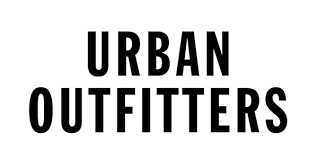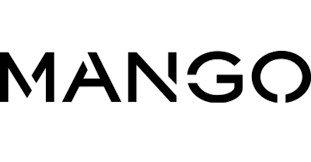fast fashion :: everything you need to know
- Fern Crossway

- Nov 10, 2021
- 14 min read
Oh, the mall, a place for cologne-drenched jeans, $5 tees, and trendy sneakers. To be honest, I haven't stepped foot in a mall in ages for reasons we'll get into in a minute, but I do remember the days of being blissfully unaware.

When I was younger I would take trips to the mall with my gramma for school clothes at the end of each summer. There were countless hours spent trying on dresses for school dances, the Hot Topic days of band tees and gauges, and even trips to Hollister or American Eagle when I wanted to prove to myself that I, the weird girl, could fit in. I'd go with empty pockets just to window shop or hang out with friends, and in my first year of college I would frequent the H&M sales racks with my best friend and my sister, looking for cheap, cute clothes to add to my wardrobe.
Fond memories, cheap clothes, so what's the problem? Well, what if I told you that this "harmless" fun is contributing to habitat loss, pollution, and the abuse and poisonings of underpaid factory workers? What if you knew that all these tightly packed stores are fueling climate change, filling waterways with toxins, and separating mothers from their children?
Before we get too ahead of ourselves, I would like to clarify that I fully acknowledge that the industry should be held responsible for their actions and do what is right for the environment, their employees, and their customers regardless of the money people are willing to spend on their products regardless of social or environmental change. I also recognize that not every person can afford (in money, time, or energy) alternatives to fast fashion and that they are not the problem, the industry is.
So now that we've had that little disclaimer, I'd like to say that it is important for everyone, regardless of your socioeconomic situation, to be informed and to do the best they can within their means with that information. We can all do our part to make the world a little better and its okay if that looks different for different people.
Now, let's get to it.
What is fast fashion?
Fast fashion is the mass production of low quality, cheap clothing and other wearable items. Essentially, it is the production of disposable clothes, meant to be worn for a season, or an event, and then thrown away and replaced by another disposable item.
According to TRAID, the average garment is worn only 10 times before it is disposed of. As soon as a new trend arises, consumers flock to malls and online shops for more of these disposable items, leaving their old items doomed for the landfill.
This habit of quickly producing items that are "on trend" and encouraging consumers to view clothing as a disposable item didn't happen over night. The "quick response" model of clothing manufacturing began in the 80s. In the 90s, this product-driven model was replaced by a market-based model, and the fast fashion industry was born.

What is overconsumption?
The technical definition of overconsumption is the "excessive consumption or use of something", which is a little too simplified, in my humble opinion. When we "overconsume" something, we are not just indulging ourselves without any real consequences. Unlike eating too many sweets or drinking a little too much one night, overconsumption of natural resources and global goods does a lot more damage than giving us a temporary stomach ache or hangover.
To create clothing, we need resources. Even synthetic materials, when traced back to their origin materials, have roots in the ground. When we start obsessively consuming these goods, only to throw them out the season (or day), we create a pattern of using up resources that exceeds the sustainable capacity of the system. Just like with fossil fuels, meat, electronics, and plastic, we're recklessly wasting nonrenewables and using up renewable resources faster than they can be replenished.

What are the environmental impacts of fast fashion?
Using up resources in this way is obviously a problem, but it can be difficult to see just how problematic it is from the brightly lit racks at Forever 21. So if we follow the lifecycle of that trendy t-shirt or cute pair of sunglasses, what exactly is going on?

Synthetics
Firstly, we must look at what raw materials are used in creating our clothes. 65% of all fibers used in the fashion industry are synthetics like polyester, nylon, and elastane. Polyester is by far the most common, accounting for 80% of all synthetic fiber. These synthetics originate from the fossil fuel petroleum (crude oil). Petroleum is a nonrenewable resource that is extracted from the earth through drilling (learn about the different types of drilling - exploratory, developmental, and directional - here). This drilling can be done on land and offshore. Offshore drilling is particularly environmentally destructive, as any problems with drilling equipment causes the oil to flow out into the ocean devastating wildlife. It is difficult and slow to stop oil spills once they've begun, resulting in millions of barrels of oil released into the ocean. This oil then floats on the water, sticking in bird feathers, removing the natural waterproofing ability of their feathers and causing them to die from hypothermia. It is also ingested by other marine life, damaging their organs, and bioaccumulating in predator species. It is estimated that 342 million barrels of oil are used each year to produce these synthetic materials.
Spills and water pollution are not exclusive to offshore drilling. Waste water from production facility also contaminates freshwater, releasing toxins and heavy metals into streams, river, and lakes. Microplastics are also a major concern with these synthetic fibers, with an estimated half million tons of plastic microfibers leaching into the oceans each year by way of washing these materials. In fact, microplastics from washing clothing accounts for 35% of all primary microplastics that enter the ocean.
Not only do these synthetic materials pollute the water, they also emit 3x more CO2 than cotton (In 2015, polyester was responsible for emitting 282 billion kg of CO2). This is a major concern in terms of the climate crisis we are currently facing. If all this isn't bad enough, in the United States alone, 82 pounds of textile waste is generated each year (11 million tons). With 62% of textiles being these non-biodegradable synthetic materials, that means this waste is going to be around for awhile, continuing to pollute our waterways, our soil, and the non-human animals that rely on these resources.
Cotton
Okay, synthetics are pretty bad. But what about non-petroleum based fibers like cotton, linen, silk, and leather? Cotton is the next big category of fiber used in the clothing industry. Although it's a natural material, it has one of the highest chemical inputs of all crops grown across the globe. In 2000, 84 million pounds of pesticides and 2 billion pounds of fertilizer were used on cotton crops in the US alone. These toxins end up in neighboring soils and running off into waterways.
Cotton also requires a large amount of water to produce. One kilo of cotton is required to produce a pair of jeans, and to grow that one kilo 10,000 liters of water are required. To put it into perspective, the water used to grow the cotton for a single pair of jeans could provide drinking water for the same person for 10 years. Let me say that again, one pair of jeans = a 10 year supply of water. It is truly mind boggling to think that you can go to some chain fashion store and spend $20-$60 on a pair of jeans that were made with a 10 year supply of water, not to mention the other resources and labor involved. Our perspective on cost and worth is truly warped by this industry.
While 100% cotton items are biodegradable and relatively easy to recycle, many items of clothing are cotton blends in order to fulfill consumer demands for stretchy, form-fitting jeans and softer tees. These blends usually consist of a synthetic, like elastane, making the item non-biodegradable.
Cellulosic Fibers
Cellulose-based fibers start with raw materials like bamboo, eucalyptus, or wood pulp and are processed similarly to polyester in order to create a variety of fabrics, including silk alternatives. The process of turning the raw material into fiber makes these fibers a "semi-synthetic". On the tag, you'll see them labeled as lyocell (Tencel), rayon (Modal, viscose), or bamboo depending on how they were produced. In theory, these cellulose-based fibers are one of the most sustainable options with Lyocell being the best option on the market. Lyocell is made from organic eucalyptus and requires no irrigation or pesticides to grow. (Cheers to some good news, finally.)
Before we get too excited, however, it's important to note that while cellulose-based fibers are generally better for the environment than synthetics or cotton, there are still some major concerns. These fibers are generally produced in the already stressed forests of Indonesia, China, and India. As of 2020, two of the top viscose producers, APR and Sateri, were still sourcing their wood pulp from ancient and endangered forests, including cleared peat swamp forests in Kalimantan. One could make the argument that using a waste product from land already scheduled to be cleared doesn't increase harm, however, I would argue that profiting from deforestation contributes to future deforestation, regardless of whether or not the land was already marked for clearing by another industry. Water contamination is also a serious problem with processing cellulose-based fibers. If wastewater from processing isn't properly managed, chemical runoff contaminates soil, freshwater, and oceans.
Animal Fibers
Let's start with wool. Wool accounts for a fairly small amount of the textile industry, coming in at just 1% of the world textile market. This percentage is inclusive of wool used in other textiles like furniture and carpets. Roughly 1.177 billion sheep are farmed globally, with a single sheep yielding enough clean fiber for roughly 6 sweaters each year (10 meters of fabric). Most wool is produced in China, Australia, and New Zealand with the UK, Iran, Russia and South Africa not far behind.
Let's start with the good news. Wool is a natural fiber. It's biodegradable, requires less washing than other materials, has a long lifespan, and it can also be recycled. However, when it comes to farming sheep, methane emissions, water use, and land use are a major concern. Sheep, like cattle, are ruminant animals that produce methane as a byproduct of digestion. When researching this blog post, I was alarmed at the lack of data for land use by sheep farming. It appears that, because most of the land used for farming sheep is non-arable (not ideal for other forms of farming) there is little to no concern over the use of this land for grazing. As a conservation biologist, I find myself puzzled as to why we don't seem to care about the impacts of grazing on these previously healthy ecosystems. In Karoo, South Africa, for example, desertification and land degradation is being driven by overgrazing and soil compaction by sheep farming, changing the vegetation and creating wastelands.

Leather, one of the oldest materials for producing clothing, is made from cattle, sheep, goats, and other animals. Predominately from ruminants, leather production is a serious contributor to methane emissions and water pollution. According to the EPA, 70% of all US water pollution stems from factory farms. The runoff from these farms causes eutrophication, suffocating fish and other aquatic species. Like sheep, other ruminants farmed for leather also contribute significantly to land degradation and soil erosion, but the land use impacts don't end there. Roughly 26% of the earth's ice-free land is used for grazing and 1/3 of the earth's arable land is used just for growing livestock feed. Leather production also contributes to deforestation with 80% of current deforestation in the Amazon rainforest caused by livestock grazing and feed production.
Tanning leather is also of major environmental concern, with chromium tanning making up 90% of the production. Tanning leather has the highest impact on eutrophication in the US.
Yikes. If you ever wanted to feel terrible about every clothing purchase you've ever made, you've come to the right place. Did I mention that in the US alone we're generation 16 million tons of textile waste every year?
What are the human impacts of fast fashion?
At this point, I'm sure you are starting to see why fast fashion is bad news for the planet, but what about people? Who farmed the cotton that made your jeans? Who tanned the leather in your sneakers? Who sew the dress you'll wear next Saturday? The question of who made your clothes is a complex one, and it involves many people. Even in the campaigns to recognize garment workers, we often fail to put a face or a name to the people who seeded, picked, processed, and dyed our clothing.
If you're in the US, it might shock you to know that roughly 97% of clothing is made in another country - yes, even clothing from companies based in the US. Garment workers are some of the lowest paid workers in the world, many who go to work each day with the knowledge that they could die. You know that icky term 'sweatshop'? That's what we're talking about here. The conditions that some of these workers are subjected to are horrendous including lack of access to restrooms, clean water, safety equipment, and emergency exits, old, unsafe equipment, and even unstable buildings. In 2013, the Rana Plaza collapse in Bangladesh was responsible for the deaths of 1,134 and injuries of 2,500 garment workers.
Many garment workers are paid by garment produced rather than an hourly wage with only 2% of workers earning a livable wage. This means, workers are often forced to work longer hours to take home enough money to meet their basic needs. Roughly 85% of garment workers are women, who are often forced to leave their children to live with family while they work.
Farmers and dyers have their own set of concerns to worry about. Remember the toxic pesticides, fertilizers, and tanning chemicals we covered earlier? Now think about who's responsible for applying those products, often without access to safety equipment. Tannery workers, some as young as 10 years old, are exposed to chromium, a known carcinogen. These workers frequently develop respiratory conditions, kidney and liver damage, eye, mouth, and skin irritation, reproductive problems, and cancer.

Because of its large chemical input, cotton has been nicknamed the world's "dirtiest" crop. Nitrate runoff contaminates local drinking water, resulting in health issues like respiratory complications, birth defects, and "blue baby syndrome". Child labor is common in cotton farming. In the world's largest cotton producing country, India, an estimated 450,000 children are forced to work in cotton fields for 9-13 hours a day. Poisoning from pesticide and herbicide use are common, leading to chronic illness and death. There are also health risks associated with harvesting cotton including increased risk of headaches, cough, and eye and skin irritation.
Next time you scroll through SHEIN or take a trip to the mall, ask yourself why that bodysuit, sweater, or pair of sunglasses is so cheap. If you can buy that shirt for only $5, who is getting cut from the profit?
What companies are responsible for continuing to make and sell fast fashion clothing?
So who's responsible for all this harm? Well, I've already mentioned a few above (yeah, that's right, you've been called out) but let's get a full list going so we know who to avoid like the plague.
SHEIN and ROMWE. The largest and the grossest, and all I can really say is if it's too cheap to believe, don't believe it. Sweatshops and child labor are the norm for these fast fashion giants. They are obsessed with creating a society of excessive consumption disorder, supporting the clothing "haul" trends and adding nearly 3,000 new products to their website each week, the vast majority of which are made with synthetic materials.
Forever 21. It doesn't take much research to see the terrible track record Forever 21 has. They are known for using cheap fabrics, refusing to change their cotton suppliers to more ethical ones, and making their employees work in sweatshop-like conditions - even in the US. They refused to sign the Bangladesh Accord to ensure worker rights and safety and they love pushing overconsumption almost as much as they love stealing designs. That's right, this well-known fast fashion brand has been sued by at least 50 designers so far for stealing their work, and we're not going to even start with stealing from small artists and indigenous cultures often unable to sue.
Bohoo (Including Nasty gal and PrettyLittleThing). This nasty company claims to make their products in the UK, which, you know, would seem great given the labor laws and worker protection in the UK. However, what they don't tell you is that their clothes are made in UK sweatshops. They also love making you want more, adding about 500 new items to their inventory each week.
Missguided. Speaking of false advertising, did you know that Missguided has been caught using real fur in their "faux fur" products? But, to the point, the cheap clothes brought to you by this sleazy company come to you without any attempt at sustainability or ethics. They're pouring out 1000sf of new items and definitely have no problem promoting overconsumption. Try to find one gem of sustainability policy with them, I dare you.
Urban Outfitters. No effort to reduce carbon emissions. No attempt to reduce or manage waste. Oh, and not even paying their workers in the US a living wage. Yikes. Urban Outfitters is even guilty of asking their US employees to work for free on the weekends.
Victoria's Secret. Okay, first of all, ick at the 44 years of sexism and anti-inclusion. Moving on, Victoria's Secret uses prison labor, which is terrible enough on its own, but even their non-forced-prison-labor employees are forced to work up to 108 hours a week while being exposed to workplace harassment and bullying. Oh yeah, they also pay a whole $0.04 per each unsustainable, synthetic bikini sewn.
H&M. They talk a big talk about being sustainable but I have yet to see any real action. This Swedish company still uses synthetics and burns unsold clothes, supposedly due to mold or excess chemicals. This leads me to wonder not only about the production of the clothing, but also the chemicals released when burning them. They refuse to do anything about the physical and sexual abuse their workers face, refused to take responsibility for garment worker deaths, and they've failed to pay a promised living wage to 850,000 workers.
Mango. This Spanish retailer has made no attempt to reduce their emissions and doesn't even have a hypothetical plan established for reducing their emissions or waste in the future. They don't pay a living wage, and, while most brands did an extremely poor job at compensating families and victims of the Rana Plaza disaster, Mango refused to disclose the amount they gave.
This list is most certainly not all inclusive and MANY other brands exist that continue to profit from the throw-away culture they've created. I'll throw some more names down below, and probably add some more as time goes on.
Others to Avoid:
Zara
American Eagle and Aerie
Garage
Brandy Melville
Fashion Nova
Gap
Old Navy
Who do you think should make the bad guys list?
What can you do about it?
Raise your hand if you're feeling overwhelmed or maybe even hopeless. It's okay. I hear you.
It's important to remember that this is not your fault and owning things from these companies does not make you a bad person. The companies are responsible. Capitalism is responsible. Not you. So what can you do?
Start where you are. Your closet and whatever brands are contained within it, is just fine. Use your clothes, love your clothes, and treat your clothes well.
Mend what you can. Ripped jeans, kitty claw mark in a t-shirt, piling on a sweater - there are lots of creative ways to fix, rework, and salvage old clothing. Darning, embroidering, and patching are a great way to start.
Sell or donate what you no longer want or need. Websites like Poshmark, Vinted, Mercari, and Depop let you upload items you no longer want and sell or swap with other community members. You can also donate clean, functional items to your local thrift stores.
When it's time for something new, check secondhand options first. The same websites you can sell on are a great place to look for gently-loved, vintage, handmade, and even brand new items. You also check local thrift, consignment, and vintage stores - this helps reduce unnecessary shipping and emissions!
If you can't find what you're looking for, try sustainable brands second. As more people become aware of the issues with fast fashion, more options start popping up for buying better. There are a number of great brands covering nearly every category from sustainable shoes to sustainable lingerie.
Commit to wear each new garment 30 times and avoid buying things just because they're trendy. Instead of approaching shopping with a "what's hot right now" mentality, consider how much you actually like, need, and will use each piece.
Learn to make your own clothes. Choosing materials with intention, like sustainably grown and produced natural materials, can help you make clothes you feel good about and good in. Learning to make your own clothes is an empowering experience. Not only is it incredibly useful skill that gives you the freedom to create anything you can imagine, it also changes the game on size and fit restrictions far too common when buying one-size-fits-all type clothing. Bye bye, low self-esteem.
Choose quality over quantity. Even if your budge restricts you to the sales rack of some of the worst fast fashion offenders, there's still ways to reduce your fashion footprint. Choose linen, lyocell, organic cotton, and other better fabrics when possible. Look for longevity in your garments, and pick clothes that you can picture yourself loving and wearing for years to come.
Spread the word. No matter where you are in the sustainable fashion journey, your voice matters. Post your favorite thrifted pieces on insta, share your favorite sustainable brands and vintage shops on TikTok, and tell your friends and fam why sustainable fashion matters to you.

There you have it. You've made it through this crash course on fast fashion and I'm super happy you're here with me. I quite fast fashion somewhere around 2013 and, frankly, don't miss it one bit. I buy and sell my clothes largely on the websites I mentioned above, and, very occasionally, I'll buy something new from one of my favorite sustainable brands. Wherever you are in this journey (curious, trying, expert thrifter, whatever), I appreciate you.
Please reach out if you have any questions, want any tips, or just want to chat about your perspective. I'm happy to listen.
Love,
Fern
Psst. If you want to check out my Depop, Mercari, Poshmark, or Vinted closet, head over here.












Comments